Plural creativity: Overview, challenges, and perspective for academic production in Management
DOI:
https://doi.org/10.19094/contextus.2022.78301Keywords:
collective creativity, team creativity, group creativity, collaborative creativity, creativity managementAbstract
Plural creativity is a growing interest in the management field of research. Academic production, however, remain dispersed, without consolidation and understanding of this perspective. This article aims to review, integrate, and consolidate academic production on plural creativity in management. The research is based on a systematic review of national and international academic production in the field of management. The analysis of academic production generated four categories: group creativity, team creativity, collective creativity, and collaborative creativity. The analysis of the categories revealed two central approaches: creativity as a result and creativity as a process. Our results contribute to the consolidation of an integrated understanding of plural creativity.
Downloads
References
Adler, P. S., & Chen, C. X. (2011). Combining creativity and control: Understanding individual motivation in large-scale collaborative creativity. Accounting, Organizations and Society, 36(2), 63-85. https://doi.org/10.1016/j.aos.2011.02.002
Aggarwal, I., & Woolley, A. W. (2019). Team creativity, cognition, and cognitive style diversity. Management Science, 65(4), 1586-1599. https://doi.org/10.1287/mnsc.2017.3001
Amabile, T. M. (1996). Creativity and innovation in organizations (Vol. 5). Boston: Harvard Business School.
Anderson, N., Potočnik, K., & Zhou, J. (2014). Innovation and creativity in organizations: A state-of-the-science review, prospective commentary, and guiding framework. Journal of Management, 40(5), 1297-1333. https://doi.org/10.1177/0149206314527128
Bam, L., De Stobbeleir, K., & Vlok, P. J. (2019). Outcomes of team creativity: A person-environment fit perspective. Management Research Review, 42(6), 760-774. https://doi.org/10.1108/MRR-02-2018-0098
Barczak, G., Lassk, F., & Mulki, J. (2010). Antecedents of team creativity: An examination of team emotional intelligence, team trust and collaborative culture. Creativity and Innovation Management, 19(4), 332-345. https://doi.org/10.1111/j.1467-8691.2010.00574.x
Baruah, J., & Paulus, P. B. (2009). Enhancing group creativity: The search for synerg. In E. A. Mannix, M. A. Neale & J. A. Goncalo (Eds), Creativity in Groups (pp. 29-56). Emerald Group Publishing Limited.
Bissola, R., & Imperatori, B. (2011). Organizing individual and collective creativity: Flying in the face of creativity clichés. Creativity and Innovation Management, 20(2), 77-89. https://doi.org/10.1111/j.1467-8691.2011.00597.x
Bodla, A. A., Tang, N., Jiang, W., & Tian, L. (2018). Diversity and creativity in cross-national teams: The role of team knowledge sharing and inclusive climate. Journal of Management & Organization, 24(5), 711-729. https://doi.org/10.1017/jmo.2016.34
Boon, A., Vangrieken, K., & Dochy, F. (2016). Team creativity versus team learning: Transcending conceptual boundaries to inspire future framework building. Human Resource Development International, 19(1), 67-90. https://doi.org/10.1080/13678868.2015.1096635
Bruno-Faria, M. D. F., & Veiga, H. M. D. S. (2015). Indicadores de condições para criar no ambiente de trabalho: Evidências de validação empírica de uma medida. Revista de Administração (São Paulo), 50, 492-506. https://doi.org/10.5700/rausp1215
Bruno-Faria, M. D. F., Veiga, H. M. D. S., & Macêdo, L. F. (2008). Criatividade nas organizações: Análise da produção científica nacional em periódicos e livros de Administração e Psicologia. RPOT, 8(1), 142-163. http://www.periodicos.ufsc.br/index.php/rpot/article/viewFile/9074/8422
Chen, C., & Liu, X. (2020). Linking team-member exchange differentiation to team creativity. Leadership & Organization Development Journal. 41(2), 208-219. https://doi.org/10.1108/LODJ-07-2019-0288
Chen, M. H. (2006). Understanding the benefits and detriments of conflict on team creativity process. Creativity and Innovation Management, 15(1), 105-116. https://doi.org/10.1111/j.1467-8691.2006.00373.x
Chi, N. W., & Lam, L. W. (2022). Is negative group affective tone always bad for team creativity? Team trait learning goal orientation as the boundary condition. Group & Organization Management, 47(1), 72-108. https://doi.org/10.1177/10596011211011336
Chow, I. H. S. (2018). Cognitive diversity and creativity in teams: The mediating roles of team learning and inclusion. Chinese Management Studies, 12(2), 369-383. https://doi.org/10.1108/CMS-09-2017-0262
Cirella, S. (2016). Organizational variables for developing collective creativity in business: A case from an Italian fashion design company. Creativity and Innovation Management, 25(3), 331-343. https://doi.org/10.1111/caim.12189
Cirella, S. (2021). Managing collective creativity: Organizational variables to support creative teamwork. European Management Review, 18(4), 404-417. https://doi.org/10.1111/emre.12475
Cirella, S., Radaelli, G., & Shani, A. B. R. (2014). Team creativity: A complex adaptive perspective. Management Research Review, 37(7), 590-614. https://doi.org/10.1108/MRR-12-2012-0261
Clarke, E., Doffman, M., & Lim, L. (2013). Distributed creativity and ecological dynamics: A case study of Liza Lim’s ‘Tongue of the Invisible’. Music and Letters, 94(4), 628-663. https://doi.org/10.1093/ml/gct118
Drazin, R., Glynn, M. A., & Kazanjian, R. K. (1999). Multilevel theorizing about creativity in organizations: A sensemaking perspective. Academy of Management Review, 24(2), 286-307. https://doi.org/10.5465/amr.1999.1893937
Elsbach, K. D., & Flynn, F. J. (2013). Creative collaboration and the self‐concept: A study of toy designers. Journal of Management Studies, 50(4), 515-544. https://doi.org/10.1111/joms.12024
Farrell, M. P. (2003). Collaborative circles: Friendship dynamics and creative work. University of Chicago Press.
Gedik, Y., & Ozbek, M. F. (2020). How cultural tightness relates to creativity in work teams: Exploring the moderating and mediating mechanisms. Creativity and Innovation Management, 29(4), 634-647. https://doi.org/10.1111/caim.12409
George, J. M. (2007). Creativity in organizations. Academy of Management Annals, 1(1), 439-477. https://doi.org/10.1080/078559814
Gilson, L. L., & Shalley, C. E. (2004). A little creativity goes a long way: An examination of teams’ engagement in creative processes. Journal of Management, 30(4), 453-470. https://doi.org/10.1016/j.jm.2003.07.001
Glăveanu, V. P. (2011). Creativity as cultural participation. Journal for the Theory of Social Behaviour, 41(1), 48–67. https://doi.org/10.1111/j.1468-5914.2010.00445.x
Glăveanu, V. P. (2012). What can be done with an egg? Creativity, material objects, and the theory of affordances. The Journal of Creative Behavior, 46(3), 192-208. https://doi.org/10.1002/jocb.13
Glăveanu, V. P. (2015). Creativity as a sociocultural act. The Journal of Creative Behavior, 49(3), 165-180. https://doi.org/10.1002/jocb.94
Glăveanu, V. P. (2017). The creative self in dialogue. In M. Karwowski & J. C. Kaufma (Eds.), The creative self: Effect of beliefs, self-efficacy, mindset, and identity (pp. 117-135). Academic Press.
Glăveanu, V. P. (2020). A sociocultural theory of creativity: Bridging the social, the material, and the psychological. Review of General psychology, 24(4), 335-354. https://doi.org/10.1177/1089268020961763
Glynn, M. A., Kazanjian, R., & Drazin, R. (2010). Fostering innovation in complex product development settings: The role of team member identity and interteam interdependence. Journal of Product Innovation Management, 27(7), 1082-1095. https://doi.org/10.1111/j.1540-5885.2010.00772.x
Guo, W., Gan, C., & Wang, D. (2020). The mobility of team members and team creativity: exploring the mediating role of team cognition. Journal of Organizational Change Management, 33(6), 1111-1122. https://doi.org/10.1108/JOCM-03-2020-0073
Hargadon, A. B., & Bechky, B. A. (2006). When collections of creatives become creative collectives: A field study of problem solving at work. Organization Science, 17(4), 484-500. https://doi.org/10.1287/orsc.1060.0200
Harvey, S., & Kou, C. Y. (2013). Collective engagement in creative tasks: The role of evaluation in the creative process in groups. Administrative Science Quarterly, 58(3), 346-386. https://doi.org/10.1177/0001839213498591
Im, S., Montoya, M. M., & Workman Jr, J. P. (2013). Antecedents and consequences of creativity in product innovation teams. Journal of Product Innovation Management, 30(1), 170-185.https://doi.org/10.1111/j.1540-5885.2012.00887.x
Jia, J., Jiao, Y., & Han, H. (2021). Inclusive leadership and team creativity: A moderated mediation model of Chinese talent management. The International Journal of Human Resource Management, 1-24. https://doi.org/10.1080/09585192.2021.1966073
Jiang, H., & Zhang, Q. P. (2014). Development and validation of team creativity measures: A complex systems perspective. Creativity and Innovation Management, 23(3), 264-275. https://doi.org/10.1111/caim.12078
Joyce, C. K., Jennings, K. E., Hey, J., Grossman, J. C., & Kalil, T. (2010). Getting down to business: Using speedstorming to initiate creative cross‐disciplinary collaboration. Creativity and Innovation Management, 19(1), 57-67. https://doi.org/10.1111/j.1467-8691.2009.00538.x
Karakaya, A. F., & Demirkan, H. (2015). Collaborative digital environments to enhance the creativity of designers. Computers in Human Behavior, 42, 176-186. https://doi.org/10.1016/j.chb.2014.03.029
Kenny, A. (2014). ‘Collaborative creativity’ within a jazz ensemble as a musical and social practice. Thinking Skills and Creativity, 13, 1-8. https://doi.org/10.1016/j.tsc.2014.02.002
Kim, J., & Song, C. (2020). The relationship between R&D team diversity and team creativity. Management Decision, 59(2), 175-189. https://doi.org/10.1108/MD-12-2019-1727
Kligler-Vilenchik, N., & Literat, I. (2018). Distributed creativity as political expression: Youth responses to the 2016 US presidential election in online affinity networks. Journal of Communication, 68(1), 75-97. https://doi.org/10.1093/joc/jqx005
Kyle’n, S. F., & Shani, A. B. (2002). Triggering creativity in teams: An exploratory investigation. Creativity and Innovation Management, 11(1), 17-30. https://doi.org/10.1111/1467-8691.00233
Lee, H. H. M., & van Dolen, W. (2015). Creative participation: Collective sentiment in online co-creation communities. Information & Management, 52(8), 951-964. https://doi.org/10.1016/j.im.2015.07.002
Literat, I., & Glaveanu, V. P. (2018). Distributed creativity on the internet: A theoretical foundation for online creative participation. International Journal of Communication, 12, 16. https://ijoc.org/index.php/ijoc/article/view/7621
Lombardo, S., & Kvålshaugen, R. (2014). Constraint-shattering practices and creative action in organizations. Organization Studies, 35(4), 587-611. https://doi.org/10.1177/0170840613517597
Men, C., Fong, P. S., Luo, J., Zhong, J., & Huo, W. (2019). When and how knowledge sharing benefits team creativity: The importance of cognitive team diversity. Journal of Management & Organization, 25(6), 807-824. https://doi.org/10.1017/jmo.2017.47
Miettinen, R. (2006). The sources of novelty: A cultural and systemic view of distributed creativity. Creativity and Innovation Management, 15(2), 173-181. https://doi.org/10.1111/j.1467-8691.2006.00381.x
Morreale, F., De Angeli, A., Masu, R., Rota, P., & Conci, N. (2014). Collaborative creativity: The music room. Personal and Ubiquitous Computing, 18(5), 1187-1199. https://doi.org/10.1007/s00779-013-0728-1
Nisula, A. M., & Kianto, A. (2016). Group climate and creativity in temporary innovation camp settings. Creativity and Innovation Management, 25(1), 157-171. https://doi.org/10.1111/caim.12168
Oddane, T. A. W. (2015). The collective creativity of academics and practitioners in innovation projects. International Journal of Managing Projects in Business, 8(1), 33–57. https://doi.org/10.1108/IJMPB-10-2013-0060
Parjanen, S., & Hyypiä, M. (2019). Innotin game supporting collective creativity in innovation activities. Journal of Business Research, 96, 26-34. https://doi.org/10.1016/j.jbusres.2018.10.056
Parjanen, S., Hennala, L., & Konsti-Laakso, S. (2012). Brokerage functions in a virtual idea generation platform: Possibilities for collective creativity? Innovation, 14(3), 363-374. https://doi.org/10.5172/impp.2012.14.3.363
Parolin, L. L., & Pellegrinelli, C. (2020). Unpacking distributed creativity: Analysing sociomaterial practices in theatre artwork. Culture & Psychology, 26(3), 434-453. https://doi.org/10.1177/1354067X19894936
Pérez-López, S., Peón, J. M. M., & Ordás, C. J. V. (2004). Managing knowledge the link between culture and organizational learning. Journal of Knowledge Management, 8(6), 93-104. https://doi.org/10.1108/13673270410567657
Pillay, N., Park, G., Kim, Y. K., & Lee, S. (2020). Thanks for your ideas: Gratitude and team creativity. Organizational Behavior and Human Decision Processes, 156, 69-81. https://doi.org/10.1016/j.obhdp.2019.11.005
Reiter-Palmon, R., Wigert, B., & de Vreede, T. (2012). Team creativity and innovation: The effect of group composition, social processes, and cognition. In M. Mumford (Ed.), Handbook of Organizational Creativity (pp. 295-326). Academic Press. https://doi.org/10.1016/B978-0-12-374714-3.00013-6
Rodríguez-Sánchez, A. M., Devloo, T., Rico, R., Salanova, M., & Anseel, F. (2017). What makes creative teams tick? Cohesion, engagement, and performance across creativity tasks: A three-wave study. Group & Organization Management, 42(4), 521-547. https://doi.org/10.1177/1059601116636476
Saad, G., Cleveland, M., & Ho, L. (2015). Individualism–collectivism and the quantity versus quality dimensions of individual and group creative performance. Journal of Business Research, 68(3), 578-586. https://doi.org/10.1016/j.jbusres.2014.09.004
Satama, S., Blomberg, A., & Warren, S. (2021). Exploring the embodied subtleties of collaborative creativity: What organisations can learn from dance. Management Learning, 53(2), 167-189. https://doi.org/10.1177/1350507620985226
Sawyer, K. (2012). Extending sociocultural theory to group creativity. Vocations and Learning, 5(1), 59-75. https://doi.org/10.1007/s12186-011-9066-5
Sawyer, R. K. (2011). Explaining creativity: The science of human innovation. Oxford university press.
Sawyer, R. K., & DeZutter, S. (2009). Distributed creativity: How collective creations emerge from collaboration. Psychology of Aesthetics, Creativity, and the Arts, 3(2), 81-92. https://doi.org/10.1037/a0013282
Schmidt, S., Schreiber, D., Pinheiro, C. M. P., & Bohnenberger, M. C. (2020). The moderating role of creativity in the relation between collaboration and performance. International Journal of Innovation Management, 24(06), 2050051. https://doi.org/10.1142/S1363919620500516.
Shalley, C. E., Zhou, J., & Oldham, G. R. (2004). The effects of personal and contextual characteristics on creativity: Where should we go from here? Journal of Management, 30(6), 933-958. https://doi.org/10.1016/j.jm.2004.06.007
Shin, Y. (2014). Positive group affect and team creativity: Mediation of team reflexivity and promotion focus. Small Group Research, 45(3), 337-364. https://doi.org/10.1177/1046496414533618
Slavich, B., & Svejenova, S. (2016). Managing creativity: A critical examination, synthesis, and new frontiers. European Management Review, 13(4), 237-250. https://doi.org/10.1111/emre.12078
Somech, A., & Drach-Zahavy, A. (2013). Translating team creativity to innovation implementation: The role of team composition and climate for innovation. Journal of management, 39(3), 684-708. https://doi.org/10.1177/0149206310394187
Tang, C., & Naumann, S. E. (2016). Team diversity, mood, and team creativity: The role of team knowledge sharing in Chinese R & D teams. Journal of Management & Organization, 22(3), 420-434. https://doi.org/10.1017/jmo.2015.43
Tripathi, N., & Ghosh, V. (2020). Deep-level diversity and workgroup creativity: The role of creativity climate. Journal of Indian Business Research, 12(4), 605-624. https://doi.org/10.1108/JIBR-01-2019-0007
Van Oortmerssen, L. A., Van Woerkum, C. M., & Aarts, N. (2015). When interaction flows: An exploration of collective creative processes on a collaborative governance board. Group & Organization Management, 40(4), 500-528. https://doi.org/10.1177/1059601114560586
Wang, X., Li, H., & Yin, H. (2020). Antecedents and consequences of creativity in teams: When and how leader humility promotes performance via team creativity. The Journal of Creative Behavior, 54(4), 843-856. https://doi.org/10.1002/jocb.410
Wróbel, A. E., Johansen, M. K., Jørgensen, M. S., & Cash, P. (2021). Facilitating creativity: Shaping team processes. Creativity and Innovation Management, 30(4), 742-762. https://doi.org/10.1111/caim.12465
Yong, K., Sauer, S. J., & Mannix, E. A. (2014). Conflict and creativity in interdisciplinary teams. Small Group Research, 45(3),266-289. https://doi.org/10.1177/1046496414530789
Yoon, S. W., Song, J. H., Lim, D. H., & Joo, B. K. (2010). Structural determinants of team performance: The mutual influences of learning culture, creativity, and knowledge. Human Resource Development International, 13(3), 249-264. https://doi.org/10.1080/13678868.2010.483815
Zhang, P., & Gheibi, S. (2015). From intrinsic motivation to employee creativity: The role of knowledge integration and team psychological safety. European Scientific Journal, 11(11). http://oai:ojs.pkp.sfu.ca:article/5527
Zhang, Y., Li, G., & Wang, M. (2020). Designing creative teams from creative members: the role of reward interdependence and knowledge sharing. Nankai Business Review International, 11(4), 617-634. https://doi.org/10.1108/NBRI-05-2020-0028
Published
How to Cite
Issue
Section
License
The authors, while doing the submission, accept the notice below:
We authors hold the copyright related to our paper and transfer Contextus journal the right for the first publication with a Creative Commons’ international license of the modality Attribution – Non-commercial 4.0, which in turn allows the paper to be shared providing that both the authorship and the journal’s right for initial release are acknowledged.
Furthermore, we are aware of our permission to take part in additional contracts independently for non-exclusive distribution of the version of our work published in this journal (e.g. publishing it in an institutional repository or as a book chapter), while acknowledging both the authorship and the journal’s initial publication.
We also certify that the paper is original and up to this date has not been released in any other journal, Brazilian or of another nationality, either in Portuguese or another language, as well as it has not been sent for simultaneous publication in other journals.
Last, we not only know that plagiarism is not tolerated by Contextus but also certify the paper presents the sources of passages from cited works, including those authored by ourselves.

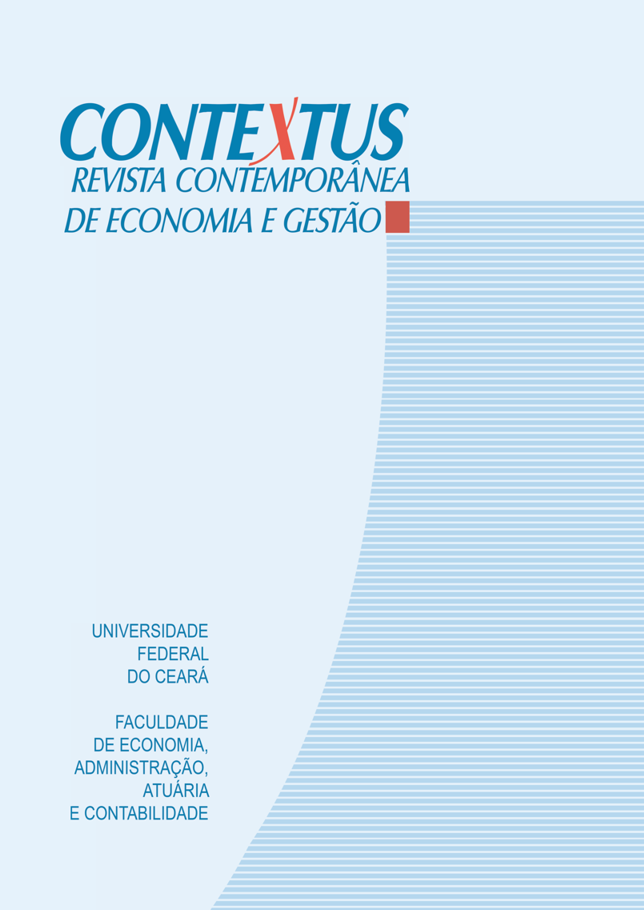




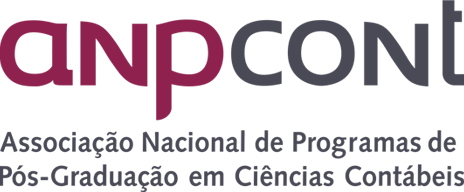



1.jpg)

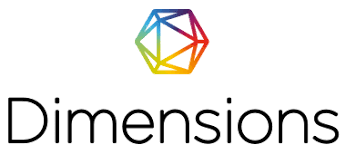

1.jpg)

1.jpg)

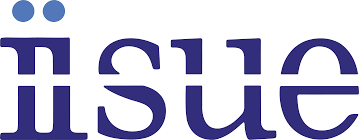

.jpg)


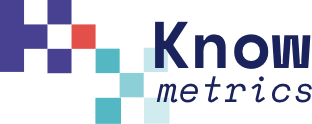
1.jpg)

1.jpg)


1.jpg)

1.jpg)
1.jpg)
2.png)




2.jpg)
1.jpg)


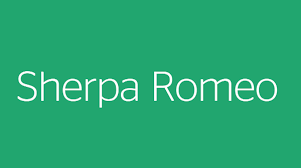
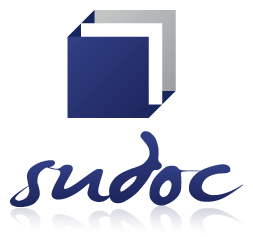
1.jpg)


1.jpg)
1.jpg)
